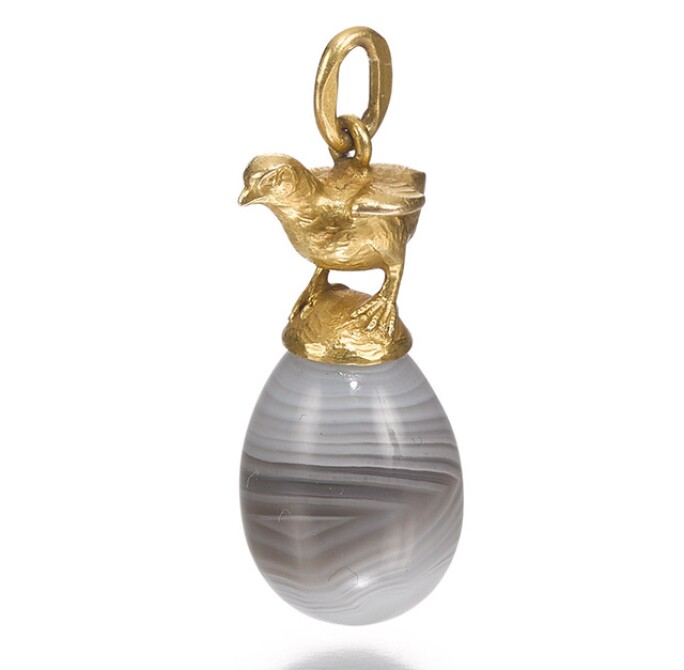Today the words ‘Fabergé’ and ‘egg’ together evoke images of the iconic Imperial presents given by the last two emperors of Russia to the last two empresses.

These gifts were part of an old tradition in Russia, now mostly lost to time. Throughout history, the egg has been a powerful symbol of rebirth and new life, especially around springtime, when the sun returns and nature awakens from the long sleep of winter. Adopted by Christianity, the Egg became a symbol of the Resurrection of Christ on Easter Sunday. With the offering of an egg, Christians would affirm their faith in the miracle of Christ’s rebirth.
Perhaps one of the most charming traditions to emerge from these celebrations was the collecting of egg pendant necklaces. From her first birthday, a girl would be given a small egg pendant every year before Easter, to be placed on a small chain, a precursor of the present day charm bracelet.

Every year, the string of eggs would grow, becoming in a way a chronicle of the years lived and memories made. After marriage, a young woman would often add a separate string, to separate the pendants given by her husband in their new life together. This necklace would be worn from Easter Sunday to the Ascension Day.

The egg pendants would vary in style, ranging from elegant and modest to lavish and ornate. Their makers included Fabergé workmasters Alfred Thielemann, Henrik Wigström (lots 431, 435), Erik Kollin, and even unknown jewellers from regions as far as Kostroma. The eggs were decorated with translucent guilloche enamels, precious gems or carved from semiprecious stones, taking an endless variety of shapes and colours. Sometimes, the egg was shaped as an animal, such as a chick or a rabbit, or decorated with quirky motifs, like little mushrooms or formal cyphers.

Eggs could also be incorporated into brooches, such as the Fabergé example from the workshop of Feodor Afanassiev. We know that this particular object was purchased by Dowager Empress Maria Feodorovna in 1905, from the tiny number 2930 delicately scratched into the gold. Objects sold by the firm were almost always inscribed with a four- or five- digit inventory number. This is how the firm kept track of its stock, in a system still used in some form by many jewellers today. Fabergé’s own records, the stock books kept, do not survive. Fortunately, when an object was purchased by a member of the Imperial Family, the firm recorded the inventory number on the invoice it sent to the Cabinet. These records survived the Revolution and now help trace objects back to their Imperial past.
The Russian Works of Art, Fabergé & Icons is in London on 28 November.



